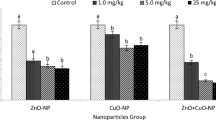Summary.
Taurine (2-aminoethane sulphonic acid), a sulphur-containing beta amino acid, is the most prevalent free intracellular amino acid in many human and animal tissues. Vitamin C metabolism is also fluenced by sulphur-containing amino acids. The aim of this study is to investigate the effect of taurine administration on the vitamin C levels of plasma and several tissues (brain, liver, kidneys) in mice with incisional skin wounds. Animals were divided into two as control and taurine groups. Taurine was freshly dissolved in sterile saline and administered daily (60 µl, ip) for five days in the taurine group. At the end of the fifth day, the animals were killed by decapitation. The brain, liver and kidneys were immediately removed. Vitamin C levels were measured in plasma and several tissues. The administration of taurine had no effect on the plasma vitamin C levels (P>0.05) but significantly increased in liver and kidneys (P<0.001). In conclusion, taurine may affect the vitamin C metabolism in tissues by different mechanisms.
Similar content being viewed by others
Author information
Authors and Affiliations
Rights and permissions
About this article
Cite this article
Kaplan, B., Dinçer, S., Babül, A. et al. The effect of taurine administration on vitamin C levels of several tissues in mice. Amino Acids 27, 225–228 (2004). https://doi.org/10.1007/s00726-003-0049-1
Received:
Accepted:
Published:
Issue Date:
DOI: https://doi.org/10.1007/s00726-003-0049-1




